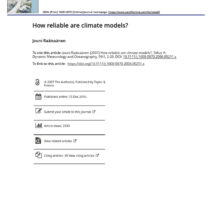The mysterious winds that sweep through Southern California, known as Santa Ana winds, have long captivated the imagination of residents and scientists alike. But as the planet continues to warm, a pressing inquiry arises: are these winds becoming fiercer with climate change? As we delve into this topic, we confront not only the sheer force of nature but also ponder the implications of a changing climate on this phenomenon.
To appreciate the potential impact of climate change on Santa Ana winds, we must first understand their origin and characteristics. These winds are a type of offshore flow, occurring when high-pressure air masses over the Great Basin area push air toward the lower pressures along the coastal regions. The air descends rapidly, compressing and heating up as it travels through the canyons and slopes of the Southern California landscape. This process, coupled with the region’s topography, transforms the winds into a dry, hot breeze that can significantly elevate temperatures and lower humidity levels.
Historically, the Santa Ana winds are associated with dry conditions, particularly during the fall months when the atmosphere is primed for such phenomena. This season has seen a unique relationship between the winds and wildfire outbreaks. The intensity and frequency of these gusts can exacerbate fire conditions, creating an environment ripe for blazes that can devastate ecosystems and communities alike. As we confront a shifting climate, it is critical to examine the extent to which these winds are changing and what this means for Southern California’s future.
Current climate models suggest that global warming could disrupt traditional weather patterns, including the dynamics that fuel the Santa Ana winds. As temperatures rise, the potential for increased variability in wind patterns emerges. Some scientists speculate that while the overall frequency of Santa Ana winds may not significantly change, the instances of extreme winds could become more pronounced. This presents a multifaceted challenge: while spin-off effects could bolster wildfire risks, understanding and predicting these changes can be critical for public safety and environmental conservation efforts.
Climate change does not simply pertain to an increase in temperature; it also involves alterations in precipitation patterns, humidity levels, and seasonal transitions. As we progress toward a warmer future, the interplay between these elements will determine how Santa Ana winds behave. A drier landscape, accompanied by a decline in winter precipitation, could render the region more susceptible to intense winds as dry air masses form more readily. The resulting atmospheric conditions could lead to a vicious cycle where wildfires become more frequent and destructive.
Consider this: if the intensity of Santa Ana winds increases due to climate-induced changes, how can communities prepare for the subsequent wildfires? Mitigation strategies could range from enhancing vegetation management and controlled burns to implementing stricter building codes in high-risk areas. These proactive measures must be informed by rigorous scientific study to accurately predict how changing climate conditions will influence wind patterns.
Moreover, the socio-economic implications are considerable. The greater the ferocity of these winds, the higher the associated risks for human life, property, and wildlife. Dramatic shifts in wind behavior could also affect air quality as wildfire smoke spreads more rapidly across regions. This could exacerbate respiratory issues for vulnerable populations, stressing public health systems and requiring more robust emergency response plans.
An equally important factor to consider is how climate change could lead to modifications in the seasonal timing of Santa Ana winds. If warmer temperatures induce shifts in autumnal weather patterns, this could generate a longer duration of fire risk during fall, in a season traditionally known for its relative tranquility. The interplay between changing climate conditions and local ecosystems requires intense scrutiny. As the landscape morphs, the flora and fauna that have adapted to historical conditions may struggle to survive. A shift in dominant vegetation could lead to a feedback loop that further enhances fire risk during the Santa Ana wind season.
While the science surrounding climate change and wind patterns is still emerging, one thing remains clear: observers must remain vigilant in monitoring these changes. Innovative research employing advanced meteorological models, satellite imaging, and on-the-ground field studies can help to illuminate the connections between climate change and Santa Ana winds. Collaborative efforts, uniting meteorologists, climatologists, and environmental scientists, will be paramount in piecing together the intricate puzzle of our changing atmosphere.
In summary, as the winds pick up speed, so do the stakes. The Santa Ana winds, emblematic of Southern California’s unique climate, stand at the forefront of a broader discussion on climate change. They pose both a formidable challenge and an opportunity for innovation in mitigation practices. As we grapple with the ramifications of these winds in a warming world, we must embrace both caution and foresight. The changing climate may compel us to rethink our relationship with these powerful gusts, leading us toward sustainable solutions that safeguard our communities, our ecosystems, and our planet.





